 LED lighting is a newly developed industry in recent years, and it is important for the design of lighting terminal products. It is necessary to master the knowledge of the traditional lighting industry, domestic and international standards, and the knowledge of LED devices. In particular, it is necessary to accurately grasp the definition of LED lights,lights, and the differences from traditional lighting lights. The characteristics and current problems of LED lights are analyzed, and the performance, evaluation and design of traditional lights are compared. The technical elements of LED lights are used to observe and track the changes and development of LED. The fixture can be fixed and used safely in the set environment. Make LED lighting play an important role in human civilization.
LED lighting is a newly developed industry in recent years, and it is important for the design of lighting terminal products. It is necessary to master the knowledge of the traditional lighting industry, domestic and international standards, and the knowledge of LED devices. In particular, it is necessary to accurately grasp the definition of LED lights,lights, and the differences from traditional lighting lights. The characteristics and current problems of LED lights are analyzed, and the performance, evaluation and design of traditional lights are compared. The technical elements of LED lights are used to observe and track the changes and development of LED. The fixture can be fixed and used safely in the set environment. Make LED lighting play an important role in human civilization.
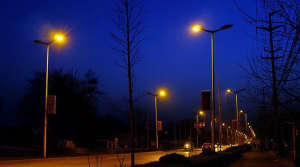 LED changes the principle of incandescent tungsten filament light emission and energy-saving lamp three basic color powder emission, and uses electric field to emit light. According to analysis, the characteristics of LED are very obvious, long life, high light efficiency, no radiation and low power consumption. The spectrum of the LED is almost entirely concentrated in the visible light band, and its luminous efficiency can exceed 160lm / W. The upper limit of future LED life will be infinite. So what is the difference between LED lights and traditional lights?
LED changes the principle of incandescent tungsten filament light emission and energy-saving lamp three basic color powder emission, and uses electric field to emit light. According to analysis, the characteristics of LED are very obvious, long life, high light efficiency, no radiation and low power consumption. The spectrum of the LED is almost entirely concentrated in the visible light band, and its luminous efficiency can exceed 160lm / W. The upper limit of future LED life will be infinite. So what is the difference between LED lights and traditional lights?
First : LED light source is different from traditional light source
 At present, there are many differences between LED lights and traditional light source lights in terms of performance, evaluation and design. The mechanical system of traditional lights is composed of the structure of fixed light sources, reflectors, lamp control devices and other components, flexible cable or flexible wire routing structure, sealing structure, mechanical protection structure, lamp fixing structure and lamp adjustment structure. It consists of a lamp holder or a light source connector, a lamp holder mounting bracket, a flexible wire fixing bracket, a terminal block, a housing, a lamp cover and a lamp mounting bracket.
At present, there are many differences between LED lights and traditional light source lights in terms of performance, evaluation and design. The mechanical system of traditional lights is composed of the structure of fixed light sources, reflectors, lamp control devices and other components, flexible cable or flexible wire routing structure, sealing structure, mechanical protection structure, lamp fixing structure and lamp adjustment structure. It consists of a lamp holder or a light source connector, a lamp holder mounting bracket, a flexible wire fixing bracket, a terminal block, a housing, a lamp cover and a lamp mounting bracket.
1.The emitting principle of traditional light source
Incandescent light emission principle
 Incandescent lights are devices that convert electrical energy into light energy to provide lighting. Its working principle is that electricity is first converted into heat, which heats the filament to a very high temperature (tungsten filament, melting point is more than 3000 ° C). At this time, the electrons outside the nucleus of the element that makes up the filament will be excited, so that it is more The high-energy outer layer transitions, and when the electrons transition to the low-energy electron layer again, the excess energy is released in the form of light. At the same time, heat is generated, and the spiral filament continuously gathers the heat, so that the temperature of the filament reaches above 2000 ° C. When the filament is in an incandescent state, it emits light just like the red iron can emit light. The higher the temperature of the filament, the brighter the light emitted. It is called an incandescent lamp.
Incandescent lights are devices that convert electrical energy into light energy to provide lighting. Its working principle is that electricity is first converted into heat, which heats the filament to a very high temperature (tungsten filament, melting point is more than 3000 ° C). At this time, the electrons outside the nucleus of the element that makes up the filament will be excited, so that it is more The high-energy outer layer transitions, and when the electrons transition to the low-energy electron layer again, the excess energy is released in the form of light. At the same time, heat is generated, and the spiral filament continuously gathers the heat, so that the temperature of the filament reaches above 2000 ° C. When the filament is in an incandescent state, it emits light just like the red iron can emit light. The higher the temperature of the filament, the brighter the light emitted. It is called an incandescent lamp.
Disadvantages: high energy consumption: low luminous efficiency, not conducive to energy saving; the heat generated is 80%, and the light is only 20%. The life is relatively short, generally around 1000 hours. The color is single: its warm color and yellowish light are sometimes not necessarily welcome. Easy to damage: glass products.
Light-emitting principle of energy-saving lights
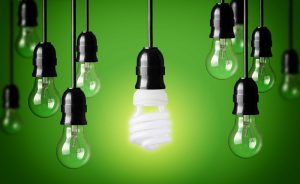 Energy-saving lights produce ultraviolet rays from the ionization of mercury vapor, which causes fluorescent powder to emit light. When the lamp is just turned on, the mercury does not completely turn into mercury vapor, so when the lamp is turned on, the light is relatively dim, and after a while, the mercury completely turns into mercury vapor before it lights up. In addition, it should be noted that “most of the energy-saving lights we currently use are three primary colors and halogen powders”, and they all need to “produce ultraviolet rays from mercury vapor ionization to make fluorescent powders (three primary color phosphors or halogen powders fluorescent Pink) glowing “. This is the basic principle of energy-saving lights and fluorescent lights!
Energy-saving lights produce ultraviolet rays from the ionization of mercury vapor, which causes fluorescent powder to emit light. When the lamp is just turned on, the mercury does not completely turn into mercury vapor, so when the lamp is turned on, the light is relatively dim, and after a while, the mercury completely turns into mercury vapor before it lights up. In addition, it should be noted that “most of the energy-saving lights we currently use are three primary colors and halogen powders”, and they all need to “produce ultraviolet rays from mercury vapor ionization to make fluorescent powders (three primary color phosphors or halogen powders fluorescent Pink) glowing “. This is the basic principle of energy-saving lights and fluorescent lights!
Disadvantages: The energy-saving lamp is very bright and flickering, which has an impact on the eyes. There is mercury pollution during the production process and after being discarded. At present, foreign countries attach great importance to mercury pollution. People are increasingly aware of the harmfulness of mercury pollution. Because it is a glass product, it is fragile, difficult to transport, and difficult to install. Its power consumption is still a bit too large. It is easy to damage, short life, and energy saving without saving money is the true portrayal of it.
Luminous principle of fluorescent lights
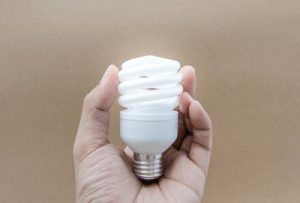 A fluorescent lamp is installed at both ends of the fluorescent tube, and the inner wall of the glass tube is coated with a thin layer of uniform phosphor. After the tube is evacuated to a vacuum of 103-104 mm Hg, a small amount of inert gas is filled, and a small amount of liquid mercury is injected. The inner wall of the lamp tube is coated with phosphor powder, and the gas between the two filaments emits ultraviolet rays when conducting electricity, so that the phosphor powder emits soft visible light.
A fluorescent lamp is installed at both ends of the fluorescent tube, and the inner wall of the glass tube is coated with a thin layer of uniform phosphor. After the tube is evacuated to a vacuum of 103-104 mm Hg, a small amount of inert gas is filled, and a small amount of liquid mercury is injected. The inner wall of the lamp tube is coated with phosphor powder, and the gas between the two filaments emits ultraviolet rays when conducting electricity, so that the phosphor powder emits soft visible light.
The cause of blackening at both ends of the lamp tube: the sublimation of tungsten wire directly turns to tungsten gas. These tungsten gases meet the lower temperature of the lamp tube and condensate on the wall of the lamp tube and become black. When thin, it is easy to burn out after power on, thus ending the life of the lamp.
Disadvantages of fluorescent lights: There are many accessories for fluorescent lights and more opportunities for failure. The price of fluorescent lights is more expensive than tungsten incandescent lights. The power of fluorescent lights cannot be made very large. Fluorescent lights are flashing with strobes.
2.Light-emitting principle of LED
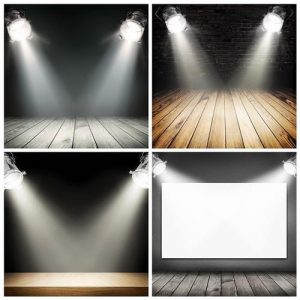 The light emitting diode is made of a group III-IV compound, such as and other semiconductors, and its core is a PN junction. Therefore, it has the I-V characteristics of a general P-N junction, that is, forward conduction, reverse cut-off, and breakdown characteristics. In addition, under certain conditions, it also has light-emitting characteristics. Under forward voltage, electrons are injected into the P region from the N region, and holes are injected into the N region from the P region. Part of the minority carriers (minorities) entering the opponent’s area recombine with the majority carriers (multiples) and emit light.
The light emitting diode is made of a group III-IV compound, such as and other semiconductors, and its core is a PN junction. Therefore, it has the I-V characteristics of a general P-N junction, that is, forward conduction, reverse cut-off, and breakdown characteristics. In addition, under certain conditions, it also has light-emitting characteristics. Under forward voltage, electrons are injected into the P region from the N region, and holes are injected into the N region from the P region. Part of the minority carriers (minorities) entering the opponent’s area recombine with the majority carriers (multiples) and emit light.
LED energy-saving lamp lighting angle
LED chip emitting angle of 120 or more. Actually,lights with a luminous angle of more than 180-240 degrees are mostly used for basic lighting. Generally, they are bright, comfortable, non-glare and have uniform illumination. In the home environment, it is mainly provided by various ceiling lights or floor lights. The selectability of LED lighting angles has given LED lights an incomparable advantage over other light sources. For example, we can make lights with different luminous angles (15 degrees, 45 degrees, 60 degrees, 70 degrees, 120 degrees, etc.) for the same model of LED. We can provide one-to-one customization according to market needs. Solve the limitations of a single style for market development.
Second: the performance of LED lights is different from traditional lights
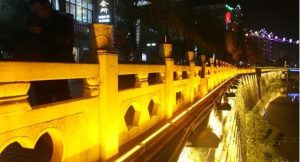 a) Color space uniformity evaluation to evaluate the color difference of different observation angles in the presence of LEDlights.
a) Color space uniformity evaluation to evaluate the color difference of different observation angles in the presence of LEDlights.
The characteristics of a single luminous body of traditional light sources are different. LED lights used in LED lights are composed of multiple luminous bodies and emit light. There are color differences between the luminous bodies in LED lights. The color space uniformity evaluation is required to evaluate the color of LED lights Spatial distribution.
b) Use the life to evaluate the durability of LEDlights.
The measurement and evaluation of the life performance of traditional light sources have been standardized and interchangeable. Therefore, the life of traditional light sources can be met by replacing damaged light sources and control devices for lights designed for a 10-year life, so they are generally not evaluated. The life of traditional light source lights. The life of LED lights is related to many factors such as the life of the LED, the LED driver, and the environment provided by the lamp to the LED. At present, there are many types of LED lights. Except for LED with standard lamp caps, other LED lights are not interchangeable. The life of different LED lights can only be determined through the relevant life evaluation. When evaluating the life of LED lights, not only the lumen maintenance life (LX), but also the failure rate (FX) must be claimed.
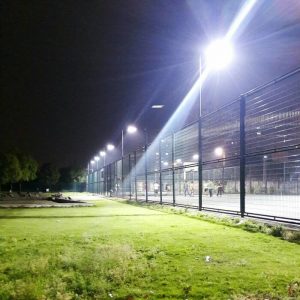 c) The evaluation parameters of the luminous flux ratio that can be used bylightsare different from traditional lights. Traditional lighting fixtures are evaluated using luminaire efficiency, while LED luminaires are evaluated using light efficiency.
c) The evaluation parameters of the luminous flux ratio that can be used bylightsare different from traditional lights. Traditional lighting fixtures are evaluated using luminaire efficiency, while LED luminaires are evaluated using light efficiency.
d) Unlike traditional lighting sources, which can be separately tested for photometry, the relative method can be used for photometric measurement. The LED light source is extremely sensitive to temperature, and it is not suitable to separate the LED light source from the lamp for separate measurement. The absolute method should be used for the lamp when measuring Photometric tests were performed as a whole.
Third:the LED lights design is different from traditional lights design
LED luminaires are significantly different from traditional light sources in terms of optical system design, electrical accessories, heat dissipation measures, and structural design.
a) Optical system
 The optical system in the luminaire is the soul of the luminaire. According to the characteristics of the selected light source, the optical system of the luminaire is designed to meet the specific lighting requirements. Generally, the optical system of a traditional light source lamp is composed of a light source, a lamp holder, a reflector, and a light transmitting cover. Because some LED units have photometric characteristics of 2π light emission, the photometric system of the luminaire is very different from traditional light source lights. The specific performance characteristics are as follows:
The optical system in the luminaire is the soul of the luminaire. According to the characteristics of the selected light source, the optical system of the luminaire is designed to meet the specific lighting requirements. Generally, the optical system of a traditional light source lamp is composed of a light source, a lamp holder, a reflector, and a light transmitting cover. Because some LED units have photometric characteristics of 2π light emission, the photometric system of the luminaire is very different from traditional light source lights. The specific performance characteristics are as follows:
(1) The LED luminaire optical system is generally an LED array or LED module composed of LED chips and lenses. The array is sometimes arranged on a flat aluminum substrate, or it may be on a protruding or recessed molded substrate. The lamp is used or not used. Transparent cover. Lamp manufacturers can combine multiple LED units or dozens of LED units on the substrate according to the lighting requirements. Care should be taken to control the consistency of the light color of the LED units after the combination, and to evaluate the uniformity of the color space of the LED lights.
(2) Because the photoelectric characteristics of LED are very sensitive to changes in the PN junction temperature; the encapsulating resin will rapidly degrade under high temperature and strong light irradiation; long-term light radiation will gradually reduce the photo-induced conversion rate of the phosphor and cause color seats The label will shift. LED lamp life assessment is usually carried out under the condition of limiting color shift to assess the lumen maintenance rate of LED lights.
b) electrical accessories
LED drive power is a key element of the performance of LED lights and lanterns, and it is also one of the requirements for the selection or design of lights.
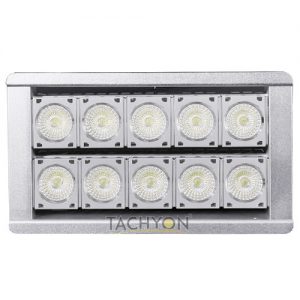 The electrical design of LED lights and lanterns should consider the characteristics and quantity of LED, the place where the lights are installed, and the position of the lights in the power grid to consider electrical safety, constant current drive, noise immunity and EMI, and select or design a suitable LED drive power supply. Because the LED is driven by a low voltage constant current source of 2V ~ 3V, unlike ordinary incandescent light bulbs that can be directly connected to 220V AC mains, a power supply and control circuit must be designed to drive the LED. In addition, the electrical connection of the LED module is also an important part of the electrical system of the LED lamp. Safety should be fully considered, and standard connectors, adequate insulation, and protection against electric shock should be used.
The electrical design of LED lights and lanterns should consider the characteristics and quantity of LED, the place where the lights are installed, and the position of the lights in the power grid to consider electrical safety, constant current drive, noise immunity and EMI, and select or design a suitable LED drive power supply. Because the LED is driven by a low voltage constant current source of 2V ~ 3V, unlike ordinary incandescent light bulbs that can be directly connected to 220V AC mains, a power supply and control circuit must be designed to drive the LED. In addition, the electrical connection of the LED module is also an important part of the electrical system of the LED lamp. Safety should be fully considered, and standard connectors, adequate insulation, and protection against electric shock should be used.
c) Cooling measures
Like traditional light source lights, LED lights also generate heat. The heat of LED lights comes from the losses in LED photoelectric conversion and LED driving power. Different from the traditional light source lighting principle (thermal radiation of incandescent lights and gas discharge of fluorescent lights), the light emission of LED is electroluminescence. Due to the problem of conversion efficiency, most of the output energy is mainly generated by non-radiative recombination lattice. The form of vibration converts thermal energy. And the way heat is transmitted in the LED is not radiation but conduction. The main goal in the heat dissipation design of LED lights is to effectively conduct the heat of the LED chips and effectively control the LED junction temperature in the LED lights. For LED luminaires, in addition to the LED being a heating element, the driver in the LED luminaire is also a heating element. In order to ensure a life coordinated with the LED light source, the thermal control of the LED driver is also very important. If a built-in driving power source is used, the luminaire should be based on its The internal ambient temperature selects the drive marked with the corresponding tc. When the driver is installed independently, the corresponding tc driver should be selected according to the possible ambient temperature of the installation site.
d) mechanical components and structures
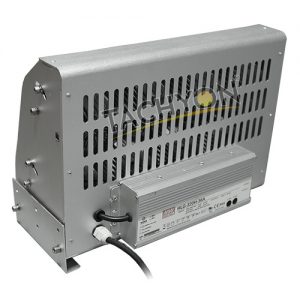 The function of the machine is to determine the position and mutual relationship of the optical system, electrical system and thermal system of the luminaire through the structural design, so that the luminaire can be fixed and used safely in the set environment. The mechanical system of traditional lights is composed of the structure of fixed light sources, reflectors, lamp control devices and other components, flexible cable or flexible wire routing structure, sealing structure, mechanical protection structure, lamp fixing structure and lamp adjustment structure. It consists of a lamp holder or a light source connector, a lamp holder mounting bracket, a flexible wire fixing bracket, a terminal block, a housing, a lamp cover and a lamp mounting bracket. Due to the characteristics of LED light sources, LED lights have several forms such as package, module, LED light engine, integral LED light, non-integral LED light, etc., except for the last two forms, which may have similar internal structure to traditional light sources LED lights do not have a standard lamp cap.
The function of the machine is to determine the position and mutual relationship of the optical system, electrical system and thermal system of the luminaire through the structural design, so that the luminaire can be fixed and used safely in the set environment. The mechanical system of traditional lights is composed of the structure of fixed light sources, reflectors, lamp control devices and other components, flexible cable or flexible wire routing structure, sealing structure, mechanical protection structure, lamp fixing structure and lamp adjustment structure. It consists of a lamp holder or a light source connector, a lamp holder mounting bracket, a flexible wire fixing bracket, a terminal block, a housing, a lamp cover and a lamp mounting bracket. Due to the characteristics of LED light sources, LED lights have several forms such as package, module, LED light engine, integral LED light, non-integral LED light, etc., except for the last two forms, which may have similar internal structure to traditional light sources LED lights do not have a standard lamp cap.
LED lights have the following structural features
There is no lamp holder in the LED lamp, but the electrical connection between the LED lamp and the lamp is completed by using a connector, and the LED lamp is fixed to the lamp body by other methods. In order to derive the heat generated by the LED chip, the LED lamp has a large number of heat sinks, and the volume and weight of the lamp are much larger than that of the traditional light source lamp. The installation structure of the lamp should be considered accordingly to ensure the safety and reliability of the installation. At the same time, the heat sink should be designed to be easy to clean or not easy to deposit dust, otherwise the efficiency of the heat sink will be quickly reduced.
When the LED lamp uses a power cord and the power cord can be disassembled for maintenance, it belongs to a non-Z type connection. Like a traditional light source connected to a non-Z type, the LED lamp should also use a flexible wire fixing bracket.
The advantages of LED lights compared to traditional lights
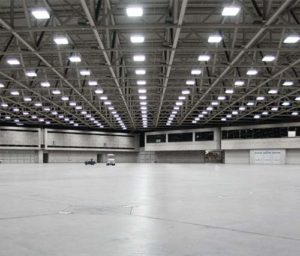 LED lights are energy-saving and environmentally friendly, and there is no harmful substance of mercury.. White LED energy consumption is only 1/10 of incandescent lights, 1/4 of energy-saving lights. Long life. Life expectancy of more than 100,000 hours, can be described as “” once and forever “” for ordinary home lighting. Can work at high speed. Energy saving If the lamp is turned on or off frequently, the filament will turn black and break quickly. The solid-state package is a type of cold light source. Therefore, it is very convenient to transport and install. It can be installed in any miniature and closed equipment. It is not afraid of vibration and basically does not need to consider heat dissipation. LED technology is advancing with each passing day, its luminous efficiency is making an amazing breakthrough, and the price is constantly decreasing. The era when LED enter the home is rapidly coming.
LED lights are energy-saving and environmentally friendly, and there is no harmful substance of mercury.. White LED energy consumption is only 1/10 of incandescent lights, 1/4 of energy-saving lights. Long life. Life expectancy of more than 100,000 hours, can be described as “” once and forever “” for ordinary home lighting. Can work at high speed. Energy saving If the lamp is turned on or off frequently, the filament will turn black and break quickly. The solid-state package is a type of cold light source. Therefore, it is very convenient to transport and install. It can be installed in any miniature and closed equipment. It is not afraid of vibration and basically does not need to consider heat dissipation. LED technology is advancing with each passing day, its luminous efficiency is making an amazing breakthrough, and the price is constantly decreasing. The era when LED enter the home is rapidly coming.
1.High photoelectric conversion rate: Under the same electric energy condition, the brightness of LED lights is many times more than that of ordinarylights.
2.energy saving and environmental protection: the same area of light, the use of LED power consumption is many times less than ordinary lights, in short, is to save electricity and pay less electricity costs.
3.strong resistance to drop: As far as a single LED is concerned, it will not be broken if it is dropped at a height of 2 meters, which is impossible for ordinary lights.
4.not easy to break: This feature is relative, only in a general sense, LED use, there are rarely bad situations. Very poor quality LED lights are easily broken.
5.small size: lightweight. An LED light is as small as a few millimeters and as large as a few centimeters, so it is more convenient to transport and store.
6.low temperature work: LED lights are cold light sources, generally from the luminous body to the position of the light shade, basically do not feel any temperature
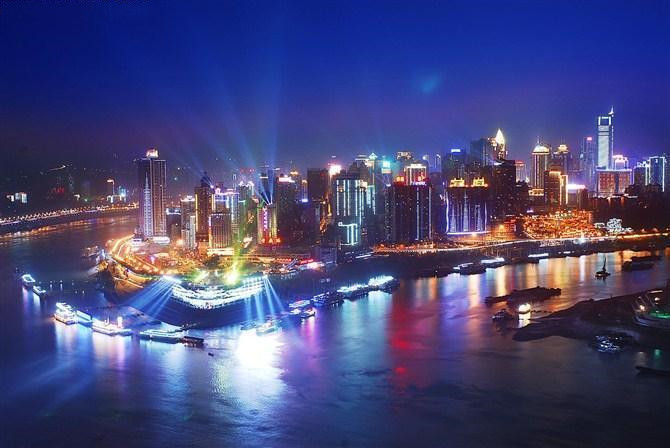 Summary:
Summary:
The cost of LED lights decreases with the continuous improvement of LED technology. Energy-saving lights and incandescent lights are bound to be replaced by LED lights. At present, more and more attention is paid to lighting energy saving and environmental protection issues, and the use of LED lights has been vigorously promoted. In the case of equal brightness: LED lights can save more than 90% of energy than incandescent lights. Compared with energy-saving lights, the energy-saving effect can reach about 80%. The advantages will be more obvious. So we have to do energy saving analysis based on the actual use of lights. The system analysis should be based on the use of the light source, what brand, power is large, whether there is a lamp, and what kind of lamp is installed. Only in this way can the energy saving scheme be formulated more accurately, the effective use of light sources, and cost savings can be achieved. However, when replacing traditional light sources, it cannot be judged by which product replaces which product. The same 40W fluorescent tube will have a very large difference in brightness if it is a different brand. For example: Philips 765 type tube compared with Foshan Lighting, the same 40W Philips 2M illuminance value than the lighting 25% high, there are many brands in the market, the difference is very large; the same 40W Philips lamp, 865 type is more than 15% higher than the 765 illuminance value, that is, the same brand of the same rated power of different models of different models of products Big difference; for example: Philips 765 type lamp, measuring the illuminance value at 2 meters, there is a greater difference when using the original barrier light panel, the bracket with anti-disc and the ordinary bracket without anti-disc , Even the difference will reach more than 50%; the difference between the fluorescent tube used by traditional fluorescent lights for one year and the new one has reached 10-20%; in summary, it is obvious that if we say how many watts of lights can be used How many watts of lights to replace is unscientific; under the circumstances that LED lighting is not yet fully mature, we should not blindly rule out conventional lighting. Instead, we should seek cooperation with conventional lighting to effectively use the technology accumulated by conventional lighting over many years. Resources market, common development and mutual benefit, the LED lights are really mature until, I believe that LED have their own piece of the sky.



